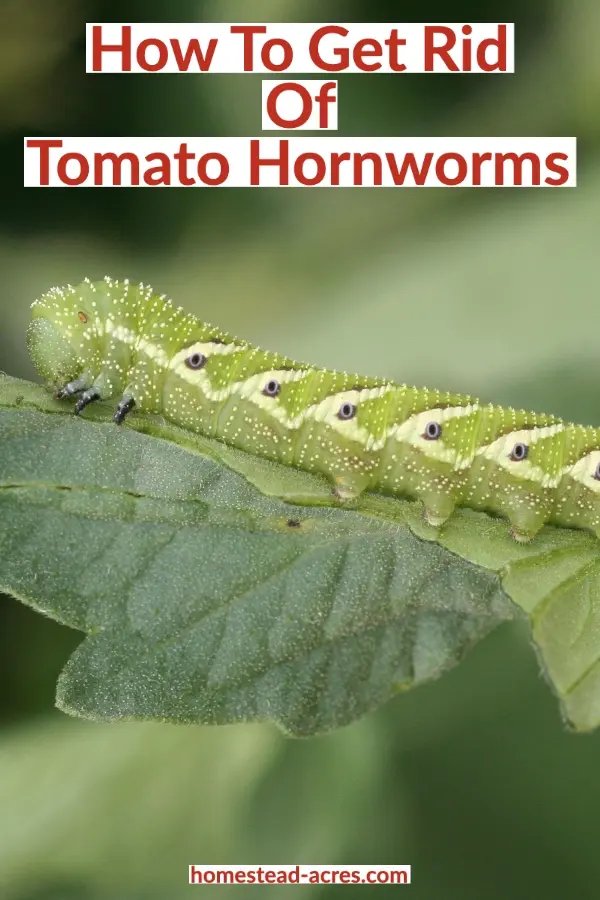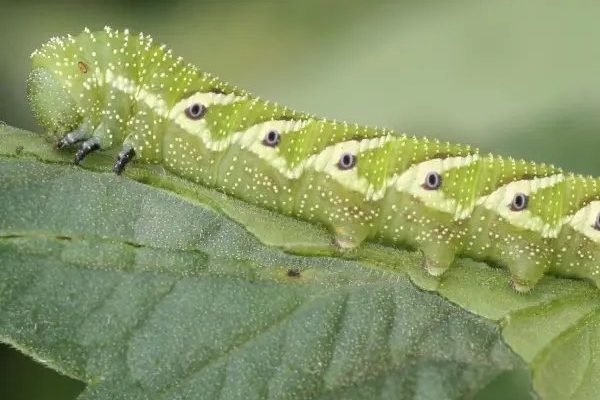
Hornworms, particularly the famous tobacco hornworm, can be a gardener’s nightmare. They thrive on your favorite plants, devouring leaves like they’re at an all-you-can-eat buffet. However, with a little know-how, you can coexist with these critters or manage their impact. So, let’s unpack everything you need to know about hornworms in your container garden setup—how to spot them, control them, and perhaps even make peace with a few of these little fellows.
What Are Hornworms?
Hornworms are the larval stage of the hawk moth. They typically measure about 3 to 4 inches long and are characterized by their bright green bodies and a distinct horn-like protrusion on their tails. The most common species found in gardens are the **tobacco hornworm** and the **tomato hornworm**. As their name suggests, they primarily feed on plants in the nightshade family, like tomatoes, peppers, and eggplants.
When you see one of these guys munching away, it can be alarming. But here’s the thing: they have a pretty short lifespan, lasting only about 3-4 weeks. During this time, they can do a significant amount of damage to your plants. They can strip a plant bare almost overnight, making it crucial for you to keep an eye out for them.
You might be wondering how to tell if you have hornworms munching on your precious plants. Look for large, matchstick-sized frass (that’s a fancy term for caterpillar poop) beneath the leaves or see if the plant leaves are suddenly missing. Trust me, it’s a shock to see a healthy plant stripped down to its skeleton!
Identifying Hornworms in Your Container Garden
Spotting hornworms isn’t as tricky as it sounds. They like to hide on the underside of leaves, so a thorough inspection is key. Here are a few tips to spot them:
- Look for damage: If your plants suddenly look like they’ve been through a shredder, you’d better check for hornworms.
- Check for droppings: As I mentioned earlier, those pellet-like droppings are a telltale sign. If you spot them, you can be sure you have an uninvited guest.
- Watch for green caterpillars: These guys can be nearly camouflaged against green leaves, so take your time to scan each plant.
Once you’ve identified a hornworm, your next step is to decide how to handle them. Ignoring them won’t make them go away, so let’s explore some control methods.
Natural Control Methods for Hornworms
You don’t necessarily want to reach for harsh chemicals when dealing with hornworms. Good news: there are several natural ways to manage them that are friendly to your container garden! Here are a few effective methods:
- Handpicking: This might sound a bit icky, but handpicking is one of the most effective methods. Just wear gloves and pluck them off your plants. You can either relocate them far away or toss them in the compost bin—nature’s way of recycling!
- Neem Oil: This natural pesticide disrupts the feeding of hornworms and can deter them from munching on your plants. Mix neem oil with water, spray it on your plants, and watch as it keeps those critters at bay.
- Encourage beneficial insects: Ladybugs and lacewings are your friends! They love to munch on hornworms and their eggs. You can attract these helpful bugs by planting flowers like marigolds or dill nearby.
By using these methods, you can take back control of your container garden without resorting to harsh chemicals that might affect the environment or your plants.
Preventing Future Hornworm Infestations
Once you’ve tackled your current hornworm problem, it’s wise to think ahead. Prevention is often the best medicine in gardening. Here are some strategies to help you keep hornworms from returning:
- Rotate your crops: Changing the location of your plants each season helps break the life cycle of hornworms. If they don’t have their favorite plants nearby, they’ll think twice about returning!
- Regular inspections: Make it a habit to check your plants at least once a week. Early detection can save you a lot of hassle later.
- Maintain plant health: Strong, healthy plants are less attractive to pests. Make sure your container garden gets the right nutrients, water, and sunlight.
By combining these preventative measures with your existing pest control strategies, you’ll create a resilient garden that can withstand the occasional hornworm invasion.
Using Companion Planting to Deter Hornworms
Companion planting is a great way to create a natural barrier against pests like hornworms. Certain plants can repel them or attract beneficial bugs that feast on them. Here are a few combos you might want to try:
- Marigolds: These cheerful flowers are not only beautiful but also effective in deterring hornworms.
- Basil: Planting basil near your tomatoes is a win-win! It enhances the flavor of your tomatoes and repels harmful insects.
- Petunias: Known for attracting lacewings, petunias can invite these natural predators into your garden.
By incorporating companion plants, you not only enrich your garden’s diversity but also create a more balanced ecosystem.
What to Do If You Have a Severe Hornworm Infestation
Sometimes, despite our best efforts, things can spiral out of control. If you find yourself facing a severe hornworm infestation, there are a few steps you can take to mitigate the damage:
- Identify and remove: Quickly identify affected plants and remove as many hornworms as possible. Even if it sounds tedious, quick action can save the rest of your garden.
- Organic pesticides: If handpicking and neem oil don’t cut it, you might consider organic pesticides that are safe for container gardens. Look for products containing Bacillus thuringiensis (Bt), which is effective against caterpillars.
- Assess your growing conditions: Sometimes, poor plant health invites pests. Ensure your plants have proper light, water, and nutrients to boost their resilience against infestations.
Acting swiftly can make a significant difference, so don’t hesitate if the situation turns grim.
Embracing Your Container Garden with Hornworms
While hornworms may be unwelcome guests, they’re also a part of the larger gardening ecosystem. It can feel frustrating to deal with them, especially when you’re nurturing your precious plants. But by understanding their life cycle, controlling their population, and employing preventative measures, you can create a thriving garden environment.
Remember, every gardener faces challenges—including hornworms. Embrace the learning process, and don’t let a few munching caterpillars dishearten you. With the right mindset and techniques, your container garden can flourish, even in the face of these little green munchers.
In the end, gardening isn’t just about achieving perfect plants; it’s also about the journey, the challenges, and the small victories along the way. Happy gardening!

